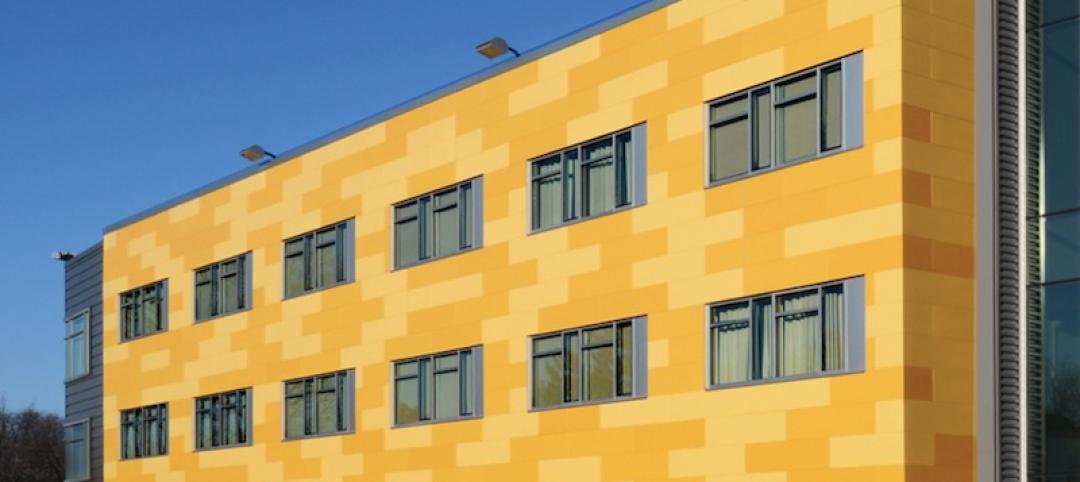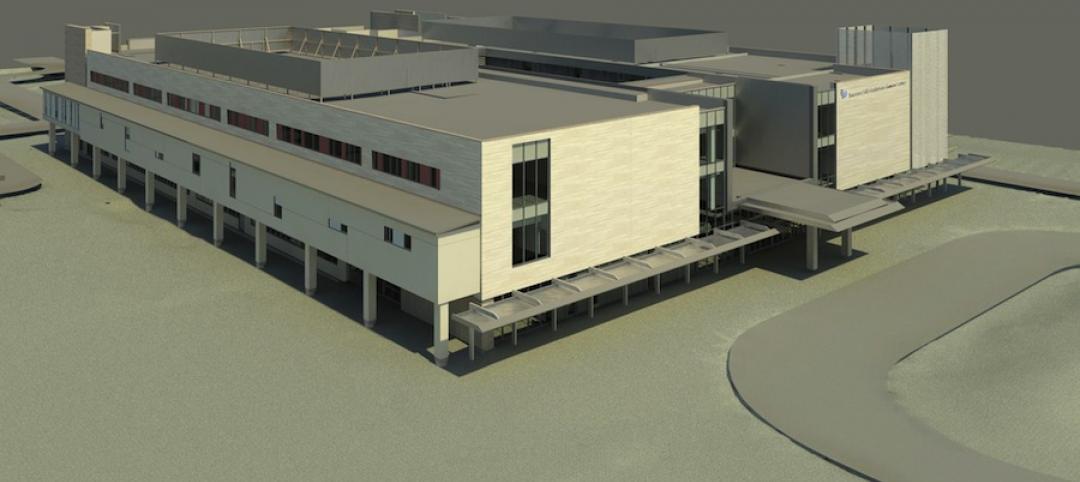The latest trend in integrated healthcare and wellness is the emergence of facilities that track and enhance human performance at the intersection of medicine, fitness, nutrition, and recovery.
At least one startup, Chicago-based Shift, is testing the public’s fervor for one-stop-shop services that combine to minimize acute and chronic pain, illness, and disease by encouraging everyday healthy living.
Until recently, human performance has mostly been the province of professional sports teams. For example, Perkins+Will has designed the 300,000-sf, nine-story sports therapy and research center that, when completed in early 2018, will be part of the Dallas Cowboys’ 91-acre headquarters campus in Frisco, Texas. The center—a collaboration among the Cowboys, healthcare provider Baylor Scott & White, and Blue Star Sports—will include surgical, emergency care, training, and rehabilitation services.
So-called “human performance facilities” are finding their way onto college campuses, too. In the summer of 2018, McNeese State University, Lake Charles, La., is scheduled to open its $41 million Health and Human Performance Education Complex.
Richard Rhodan, the university’s Director of Facilities and Plant Operations, says the 145,000-sf facility—designed by Crawford Architects and Randy M. Goodloe Architect, and built by Alfred Palma LLC—will set aside 22,000 sf for classrooms, labs, and offices for the college’s health and human performance program, whose enrollment has increased by 20% since 2010. Another 8,500 sf feet will be shared space, where students get hands-on training in hydrotherapy, kinesiology, and other sports-related recovery procedures.
In a recent blog on BD+C’s website (www.BDCnetwork.com/JWilliamsBlog), Jennifer Williams, an Interior Designer with P+W, observed that human performance facilities for “common folk” are popping up around the country. These facilities combine diagnostic and clinical services with “performance centers” that rely on technology and coaching to help individuals and teams reach their optimum health and fitness levels.
 Courtesy Shift.
Courtesy Shift.
In Chicago, Shift—a two-floor, 14,000-sf facility, which opened on February 15—focuses on prevention and quality of life through medical, nutrition, fitness, coaching, and recovery programs that get members directly involved in their own healthy choices and courses of action. Membership ranges from $3,000 to $8,000 annually for three tiers of health and wellness plans:
- Shift Life helps members define their health goals and create habits for healthy living. This level includes a yearly physical and 12 months of direct primary medical care, plus access to the facility’s amenities and equipment.
- Shift Extension offers all of the Shift Life services, but targets Chicagoans who travel a lot and probably won’t use the facility as their primary place of fitness and recovery. These members have access to virtual coaching sessions. Extension members also have access to a primary care physician within the facility, and a one-day-per-month pass for fitness and recovery activities.
- Shift Primary Care provides high-quality, easily accessible personalized medical care. The facility’s medical staff strives to build a long-term relationship with members.
 Courtesy Shift.
Courtesy Shift.
“Coaching is at the heart of the Shift experience,” says Dr. Ari Levy, Shift’s Founder and CEO, an internal medicine specialist who has experience as a personal trainer and nutritionist.
His conception of Shift can be traced to his college days, when, he says, “I noticed that the fitness and medical worlds weren’t necessarily coming together. Today, we know more than ever about how the mind and body work, yet we still have chronic diseases.”
Levy says that his real estate and project team partners—notably CBRE, CannonDesign, and the DiCosola Group—were instrumental in developing Shift’s design. “We helped them organize Shift’s spaces because they weren’t exactly sure what the overall tone would be,” says Robert Benson, Principal/Design Leader in CannonDesign's Chicago office.
What Levy wanted was smooth design transitions from room to room within the facility. For example, the entrance and café on the top floor needed to be “warm and inviting,” with glass doors, translucent walls, and a reclaimed wood table that conveyed “a presence of comfort.”
A 26-foot-long, 13-foot-wide staircase, whose steps are covered with a turf and rubber motif, leads to the facility’s medical offices, which Levy describes as “safe and secure, but not clinical.”
“Ari’s idea is, ‘How can we treat people who are healthy?’” says Benson, a BD+C 40 Under 40 honoree. “This is an incredible opportunity for them, and I’m surprised something like this hasn’t happened sooner.”
 Courtesy Shift.
Courtesy Shift.
Related Stories
| Oct 28, 2013
Urban growth doesn’t have to destroy nature—it can work with it
Our collective desire to live in cities has never been stronger. According to the World Health Organization, 60% of the world’s population will live in a city by 2030. As urban populations swell, what people demand from their cities is evolving.
| Oct 18, 2013
Meet the winners of BD+C's $5,000 Vision U40 Competition
Fifteen teams competed last week in the first annual Vision U40 Competition at BD+C's Under 40 Leadership Summit in San Francisco. Here are the five winning teams, including the $3,000 grand prize honorees.
| Oct 18, 2013
Researchers discover tension-fusing properties of metal
When a group of MIT researchers recently discovered that stress can cause metal alloy to fuse rather than break apart, they assumed it must be a mistake. It wasn't. The surprising finding could lead to self-healing materials that repair early damage before it has a chance to spread.
| Oct 14, 2013
The next level of Lean process for healthcare
Most hospitals have begun the Lean process improvement stage to eliminate waste, reduce travel distances, and minimize inventory, with varying levels of success. Here are three keys to creating a prosperous Lean program.
| Sep 24, 2013
8 grand green roofs (and walls)
A dramatic interior green wall at Drexel University and a massive, 4.4-acre vegetated roof at the Kauffman Performing Arts Center in Kansas City are among the projects honored in the 2013 Green Roof and Wall Awards of Excellence.
Sponsored | | Sep 23, 2013
Nichiha USA panels provide cost savings for community project
When tasked with the design and development of a newly constructed Gateway Rehabilitation Center, architects at Rothschild Doyno Collaborative first designed the new center to include metal panels. When the numbers came back, they were challenged with finding a product that would help cut costs and keep them within the construction budget. Nichiha’s fiber cement panels come in a half or less of the metal panel cost.
Sponsored | | Sep 23, 2013
HKS leverages Revu and Bluebeam Studio for IPD on the Banner Health MD Anderson Health Center project
Read how HKS is working collaboratively with all project partners and streamlining information flow using Bluebeam Revu and Bluebeam Studio to digitize communication and deliver the facility using IPD.
| Sep 19, 2013
What we can learn from the world’s greenest buildings
Renowned green building author, Jerry Yudelson, offers five valuable lessons for designers, contractors, and building owners, based on a study of 55 high-performance projects from around the world.
| Sep 19, 2013
6 emerging energy-management glazing technologies
Phase-change materials, electrochromic glass, and building-integrated PVs are among the breakthrough glazing technologies that are taking energy performance to a new level.
| Sep 19, 2013
Roof renovation tips: Making the choice between overlayment and tear-off
When embarking upon a roofing renovation project, one of the first decisions for the Building Team is whether to tear off and replace the existing roof or to overlay the new roof right on top of the old one. Roofing experts offer guidance on making this assessment.

















